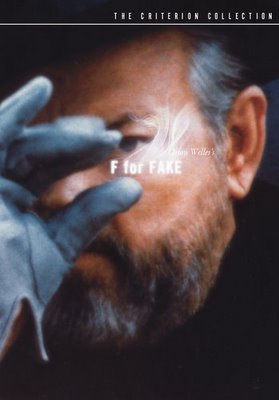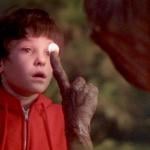 Took in an Orson Welles double-bill at the Pacific Cinematheque last night.
Took in an Orson Welles double-bill at the Pacific Cinematheque last night.
F for Fake (1976) — which comes out as a Criterion DVD next month — was one of the last films Welles finished, and it’s a remarkable blend of fact and fiction, a very mid-1970s and early post-modern rumination on the relationship between reality and illusion.
Welles begins and ends the film by flaunting his flair for magic tricks, and in between, he ponders the significance of art forgery, the role that fallible “experts” have unwittingly played in sustaining the market for forgeries, the hysteria caused by his own 1938 radio broadcast of The War of the Worlds, and the mysterious fact that some of the greatest human creations, such as the cathedral at Chartres, have had no signature at all but have simply been collective tributes to God and human dignity.
Welles notes that one of the consequences of our society’s decreased interest in God is that it has nothing left to praise but human dignity, and it has become obsessed with determining the authenticity of those signatures and autographs that represent that dignity in individual artists — so what happens when the authenticity we look for is difficult to find or just isn’t there? (It is especially interesting that Welles himself makes this point, considering how many of his own films have been subject to studio interference and multiple edits, and how much debate there is over which versions best represent the “director’s cut”.)
One of Welles’s subjects is Clifford Irving, who apparently wrote a biography of the reclusive Howard Hughes that many believe was faked itself, and at one point, I think as Welles ponders an “interview” that was conducted with Hughes over a speakerphone, he says something like, “Howard Hughes was known to use doubles. Was a double now using Howard Hughes?”
FWIW, apparently Citizen Kane was going to be based on the life of Hughes (who still had just a few months to live when Welles finished F for Fake), until Welles decided to model his film after a newspaper tycoon instead — which is interesting, considering how many people, including me, compared Martin Scorsese’s The Aviator to Kane. Welles, incidentally, remarks that he couldn’t have made a fictionalized version of Hughes’s life because it was too improbable, and I believe he even says Hughes’s life may be unfilmable; I would say Scorsese has proved him wrong, but I think Welles had the later part of Hughes’s life in mind, which takes place after the events depicted in Scorsese’s film.
Early on, someone makes the point that the real question is not whether any work of art is “a real painting” or “a fake painting”, but whether a work of art is “a good fake” or “a bad fake”. This inevitably brought to mind The Matrix (my review) and some of the discussions that emerged from that series, including the Baudrillardian concept of simulacra, or a simulation of the real, which “never hides the truth, but hides the fact that there is none.”
So, interesting film. And it makes me wonder yet again what was going through Orson Welles’s mind when he agreed to provide the narration for the film version of Hal Lindsey’s The Late Great Planet Earth (my essay) just a couple years later.
The other film on the bill was Mr. Arkadin (1955), also known as Confidential Report, which I actually found less interesting than Welles’s pseudo-documentary — though there were some interesting thematic overlaps, such as the question of what the title character’s “real” identity was. And has a director ever framed his own face, or exaggerated his own vanity to the point of self-mockery, in such amusingly strange ways? (Well, a clip I once saw from Prince’s Under the Cherry Moon comes to mind…)












